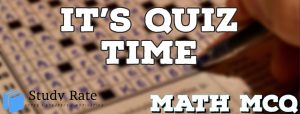Free PDF Download of CBSE Class 10 Science Chapter 11 The Human Eye and The Colorful World Assertion Reason Questions Class 10 Science. Assertion and Reason Questions for Class 10 Science with Answers were Prepared Based on the Latest Exam Pattern. Students can solve NCERT Class 10 Science The Human Eye and The Colorful World to know their preparation level.
Join our Telegram Channel, there you will get various e-books for CBSE 2024 Boards exams for Class 9th, 10th, 11th, and 12th.
The Human Eye and The Colorful World Class 10 Assertion Reason Questions
The following questions consist of two statements – Assertion (A) and Reason (R). Answer these questions by selecting the appropriate option given below:
(a) If both Assertion and Reason are correct and Reason is the correct explanation of Assertion.
(b) If both Assertion and Reason are correct, but Reason is not the correct explanation of Assertion.
(c) If Assertion is correct but Reason is incorrect.
(d) If Assertion is incorrect but Reason is correct.
Assertion: The blue color of the sky appears due to the scattering of the blue colors.
Reason: Blue color has the shortest wavelength in the visible spectrum.
(a) If both Assertion and Reason are correct and Reason is the correct explanation of Assertion.
Assertion: Hypermetropia is the defect of the eye in which only farther objects are seen.
Reason: Hypermetropia is corrected by using a converging lens.
(b) If both Assertion and Reason are correct, but Reason is not the correct explanation of Assertion.
Assertion: The focal length of the objective lens of the telescope is larger than that of the eyepiece.
Reason: The resolving power of the telescope increase when the aperture of the objective lens is small.
(c) If Assertion is correct but Reason is incorrect.
Assertion: Light from a distant object arriving at the eye lens may get converged at a point in front of the retina.
Reason: The eye is producing too much divergence in the incident beam.
(c) If Assertion is correct but Reason is incorrect.
Assertion: Myopia is due to the increased converging power of the eye lens.
Reason: Myopia can be corrected by using spectacles made from concave lenses.
(b) If both Assertion and Reason are correct, but Reason is not the correct explanation of Assertion.
Assertion: The light of violet color deviates the most and the light of red color the least while passing through a prism.
Reason: For a prism material, the refractive index is highest for red light and lowest for the violet light.
(b) If both Assertion and Reason are correct, but Reason is not the correct explanation of Assertion.
Assertion: Myopia is the defect of the eye in which only nearer objects are seen by the eye.
Reason: The eye ball is elongated.
(a) If both Assertion and Reason are correct and Reason is the correct explanation of Assertion.
Assertion: Secondary rainbow is fainter than a primary rainbow.
Reason: Secondary rainbow formation is three-step process and hence, the intensity of light is reduced at the second reflection inside the rain drop.
(a) If both Assertion and Reason are correct and Reason is the correct explanation of Assertion.
Assertion: The stars twinkle while the planet do not.
Reason: The stars are much bigger in size than the planets.
(b) If both Assertion and Reason are correct, but Reason is not the correct explanation of Assertion.
Assertion: When we see an object, the image formed on the retina is real and inverted.
Reason: If the magnification of a system is less than one, then the image formed is inverted.
(c) If Assertion is correct but Reason is incorrect.
Assertion: Optical instruments are used to increase the size of the image of the object.
Reason: The optical instruments are used to increase the visual angle.
(d) If Assertion is incorrect but Reason is correct.
Assertion (A): The human eye can focus on objects at different distances.
Reason (R): The lens in the human eye can change its shape to adjust the focal length and focus on objects at different distances.
Answer: (a) Both A and R are true and R is the correct explanation of A.
Assertion (A): The near point of the human eye increases with age.
Reason (R): The flexibility of the lens decreases with age, making it harder for the eye to focus on nearby objects.
Answer: (a) Both A and R are true and R is the correct explanation of A.
Assertion (A): Ciliary muscles in the eye control the shape of the lens.
Reason (R): Contraction and relaxation of the ciliary muscles change the curvature of the lens for focusing on objects at different distances.
Answer: (a) Both A and R are true and R is the correct explanation of A.
Assertion (A): The lens in the human eye is responsible for the accommodation of vision.
Reason (R): The lens adjusts its shape to focus light rays from objects at different distances onto the retina.
Answer: (a) Both A and R are true and R is the correct explanation of A.
Assertion (A): The retina of the human eye contains photoreceptor cells called rods and cones.
Reason (R): Rods are responsible for black-and-white vision in dim light, while cones are responsible for color vision in bright light.
Answer: (a) Both A and R are true and R is the correct explanation of A.
Assertion (A): The image formed on the retina is inverted and real.
Reason (R): The lens in the eye forms an inverted image on the retina, which is then transmitted to the brain for interpretation.
Answer: (a) Both A and R are true and R is the correct explanation of A.
Assertion (A): The persistence of vision is the phenomenon by which an image continues to be seen by the eye for a brief moment even after the actual image is removed.
Reason (R): The retina retains the visual sensation for a short duration, allowing us to perceive continuous motion in movies or animations.
Answer: (a) Both A and R are true and R is the correct explanation of A.
Hope the information shed above regarding Assertion Reason Questions for Class 10 Science Chapter 11 The Human Eye and The Colorful World with Answers Pdf free download have been useful to an extent. If you have any other queries about CBSE Class 10 Science The Human Eye and The Colorful World Assertion Reason Questions with Answers, feel free to comment below so that we can revert back to us at the earliest possible.
By Team Study Rate



